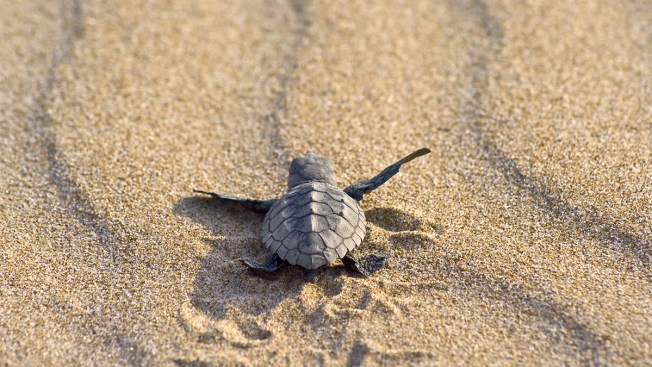A
recent article pertaining
to the sex ratio of loggerhead sea turtles was
published in January of 2018 in PLOS One by Jacob A. Lasala, Colin R.
Hughes, and Jeanette Wyneken.
Male
turtles are difficult to account for in the loggerhead population because they
do not come ashore as nesting females do. In order to study the sex ratio of
adult loggerheads, researchers used breeding sex ratios throughout three
seasons of nesting to see how many males and females are involved in breeding
and adding diversity to the population that nests in Florida. They were able to
genotype 64 of the females that came ashore to nest, and 989 loggerhead hatchlings
from nests in the area. From their data, they determined that there were 126 different
paternal males and found that there was more than one paternal male in 70
percent of the nesting sites that were evaluated. This high number of
individual adult males could be a result of females storing sperm over the
course of time between nesting seasons as they travel, accounting for the
larger gene-pool. The article also suggests that the breeding sex ratio could be
affected by the frequency that each gender mates throughout the year.
This study adds to our understanding of reptile reproduction pertaining to
temperature-dependent sex determination, as discussed in lecture. Higher
incubation temperatures in most turtles correlates to the undifferentiated
gonads becoming ovaries, leading to higher numbers of female hatchlings.
These findings are valuable because global warming is a growing issue, which is a huge
concern for the threatened loggerhead sea turtle species due to their temperature-dependent
sex determination, where warmer temperatures have the potential to alter the
sex ratio. This research exhibits the large number of paternal males
contributing to nests along the coast of Florida, giving insight to the adult
males that females are able to encounter in the population during their
travels. Although the number of female hatchlings is observed to be much higher
than male hatchlings, this study can offer a basis for comparison in the years
to come to investigate the impact of global warming on the population of
loggerhead turtles.
This research interests me, as I am concerned for
the status of the loggerhead sea turtle species and whether or not the temperature
affects of climate change are contributing to a detrimental decrease in their
population as a whole. I find it very interesting that these researchers used
genetics as an alternative in order to investigate the current adult male
population.
Citation: Lasala JA, Hughes
CR, Wyneken J (2018) Breeding sex ratio and population size of loggerhead
turtles from Southwestern Florida. PLoS ONE 13(1): e0191615. <http://journals.plos.org/plosone/article/file?id=10.1371/journal.pone.0191615&type=printable>

1 comment:
Very relevant article!
Post a Comment